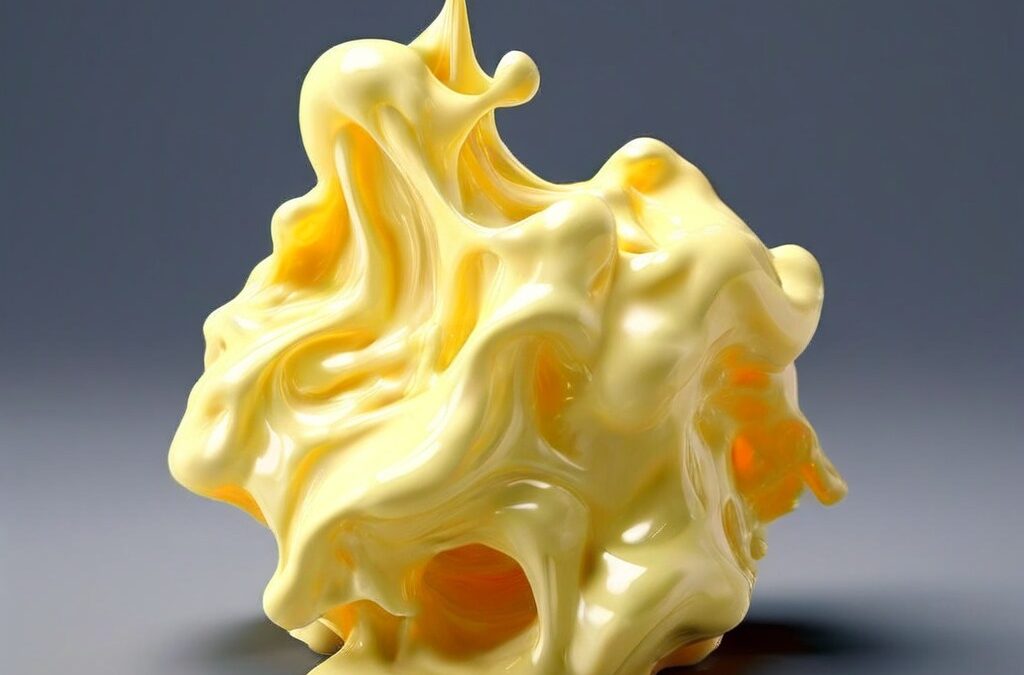
Resin
October 12, 2021
Enhancing Pavement and Cement Strength for Sustainable Infrastructure
March 3, 2024One new application of paraffin wax is in the field of 3D printing. Paraffin wax can be used as a support material in 3D printing, particularly in the production of complex geometries with overhangs and internal structures that would be difficult to create using traditional support materials.
Paraffin wax can potentially reduce the cost of 3D modeling by serving as a cost-effective support material for 3D printing. Compared to traditional support materials such as ABS or PLA, paraffin wax is typically less expensive and easier to work with. It is also a biodegradable and non-toxic material, which can help reduce waste and environmental impact.
In addition to the lower cost of the support material itself, the use of paraffin wax can also reduce the cost of post-processing.
Paraffin wax can be easily melted away using heat, which eliminates the need for additional processing steps such a sanding or grinding to remove the support material. This can result in a faster and more efficient post-processing process, which can help reduce the overall cost of 3D modeling.
Overall, the use of paraffin wax as a support material in 3D printing has the potential to reduce the cost of 3D modeling, particularly for complex geometries that require support structures. However, it is important to consider the cost of
the primary printing material and the 3D printer itself when evaluating the cost-effectiveness of 3D modeling.
In this process, paraffin wax is melted and extruded alongside the primary printing material to provide temporary support during the printing process. Once the object is complete, the paraffin wax can be easily melted away using heat, leaving behind the finished product.
The process involves the following steps:
- Design the 3D model: The first step is to design the 3D model using a 3D modeling software. The design should include the object and any overhangs or internal structures that may require support.
- Select the printing materials: The next step is to select the primary printing material and the paraffin wax. The primary printing material should be compatible with the 3D printer and the paraffin wax.
- Configure the 3D printer: The 3D printer needs to be configured to use the paraffin wax as a support material. This involves adjusting the settings to enable the printer to print with two materials simultaneously.
- Start the printing process: Once the printer is configured, the printing process can be started. The printer will print the primary material and the paraffin wax simultaneously, creating the object and the support structure.
- Remove the support material: After the printing is complete, the object needs to be removed from the support material. The paraffin wax can be easily melted away using heat, leaving behind the finished product.
Using paraffin wax as a support material in 3D printing offers several advantages, including its biodegradability, non-toxicity, and ease of removal. It is an environmentally friendly option that reduces the amount of post-processing required, resulting in a more efficient and sustainable 3D printing process.
There are several companies that support the use of paraffin wax for 3D printing as a support material. Some of these companies include:
- Stratasys: Stratasys offers a soluble support material called SR-30 that is made of a blend of paraffin wax and polyvinyl alcohol (PVA). This support material is designed to work with their FDM 3D printers.
- Ultimaker: Ultimaker offers a water-soluble support material called PVA, which is made of a blend of polyvinyl alcohol and paraffin wax. This support material is compatible with their FDM 3D printers.
- MakerBot: MakerBot offers a dissolvable support material called Dissolvable Filament, which is made of a blend of polylactic acid (PLA) and paraffin wax. This support material is designed to work with their FDM 3D printers.
- 3D Systems: 3D Systems offers a water-soluble support material called Infinity Rinse-Away, which is made of a blend of polyvinyl alcohol and paraffin wax. This support material is compatible with their FDM 3D printers.
- Formlabs: Formlabs offers a dissolvable support material called Washaway, which is made of a blend of polyvinyl alcohol and paraffin wax. This support material is designed to work with their SLA 3D printers.
These companies and others provide support materials that are compatible with a range of 3D printers, making it easier for users to incorporate paraffin wax as a support material in their 3D printing projects.
The grade of paraffin wax used in 3D printing as a support material is typically low-melting point paraffin wax. Low-melting point paraffin wax has a melting point range of 40°C to 70°C (104°F to 158°F), which allows it to be easily melted away after the 3D printing process is complete. This type of paraffin wax is commonly used in the candle-making industry, as it has a low viscosity and can be easily molded.
In addition to low-melting point paraffin wax, microcrystalline wax can also be used as a support material in 3D printing. Microcrystalline wax has a higher melting point range than paraffin wax, typically between 60°C and 90°C (140°F to 194°F), which allows it to provide more stable support for the printed object.
Microcrystalline wax has a higher viscosity than paraffin wax, making it more suitable for creating support structures with more intricate shapes.
Both low-melting point paraffin wax and microcrystalline wax are readily available and can be sourced from a variety of suppliers. When selecting a grade of paraffin wax for 3D printing, it is important to consider factors such as the melting point range, viscosity, and compatibility with the primary printing material.
One new application of paraffin wax is in the field of 3D printing. Paraffin wax can be used as a support material in 3D printing, particularly in the production of complex geometries with overhangs and internal structures that would be difficult to create using traditional support materials.
Paraffin wax can potentially reduce the cost of 3D modeling by serving as a cost-effective support material for 3D printing. Compared to traditional support materials such as ABS or PLA, paraffin wax is typically less expensive and easier to work with. It is also a biodegradable and non-toxic material, which can help reduce waste and environmental impact.
In addition to the lower cost of the support material itself, the use of paraffin wax can also reduce the cost of post-processing.
Paraffin wax can be easily melted away using heat, which eliminates the need for additional processing steps such a sanding or grinding to remove the support material. This can result in a faster and more efficient post-processing process, which can help reduce the overall cost of 3D modeling.
Overall, the use of paraffin wax as a support material in 3D printing has the potential to reduce the cost of 3D modeling, particularly for complex geometries that require support structures. However, it is important to consider the cost of
the primary printing material and the 3D printer itself when evaluating the cost-effectiveness of 3D modeling.
In this process, paraffin wax is melted and extruded alongside the primary printing material to provide temporary support during the printing process. Once the object is complete, the paraffin wax can be easily melted away using heat, leaving behind the finished product.
The process involves the following steps:
- Design the 3D model: The first step is to design the 3D model using a 3D modeling software. The design should include the object and any overhangs or internal structures that may require support.
- Select the printing materials: The next step is to select the primary printing material and the paraffin wax. The primary printing material should be compatible with the 3D printer and the paraffin wax.
- Configure the 3D printer: The 3D printer needs to be configured to use the paraffin wax as a support material. This involves adjusting the settings to enable the printer to print with two materials simultaneously.
- Start the printing process: Once the printer is configured, the printing process can be started. The printer will print the primary material and the paraffin wax simultaneously, creating the object and the support structure.
- Remove the support material: After the printing is complete, the object needs to be removed from the support material. The paraffin wax can be easily melted away using heat, leaving behind the finished product.
Using paraffin wax as a support material in 3D printing offers several advantages, including its biodegradability, non-toxicity, and ease of removal. It is an environmentally friendly option that reduces the amount of post-processing required, resulting in a more efficient and sustainable 3D printing process.
There are several companies that support the use of paraffin wax for 3D printing as a support material. Some of these companies include:
- Stratasys: Stratasys offers a soluble support material called SR-30 that is made of a blend of paraffin wax and polyvinyl alcohol (PVA). This support material is designed to work with their FDM 3D printers.
- Ultimaker: Ultimaker offers a water-soluble support material called PVA, which is made of a blend of polyvinyl alcohol and paraffin wax. This support material is compatible with their FDM 3D printers.
- MakerBot: MakerBot offers a dissolvable support material called Dissolvable Filament, which is made of a blend of polylactic acid (PLA) and paraffin wax. This support material is designed to work with their FDM 3D printers.
- 3D Systems: 3D Systems offers a water-soluble support material called Infinity Rinse-Away, which is made of a blend of polyvinyl alcohol and paraffin wax. This support material is compatible with their FDM 3D printers.
- Formlabs: Formlabs offers a dissolvable support material called Washaway, which is made of a blend of polyvinyl alcohol and paraffin wax. This support material is designed to work with their SLA 3D printers.
These companies and others provide support materials that are compatible with a range of 3D printers, making it easier for users to incorporate paraffin wax as a support material in their 3D printing projects.
The grade of paraffin wax used in 3D printing as a support material is typically low-melting point paraffin wax. Low-melting point paraffin wax has a melting point range of 40°C to 70°C (104°F to 158°F), which allows it to be easily melted away after the 3D printing process is complete. This type of paraffin wax is commonly used in the candle-making industry, as it has a low viscosity and can be easily molded.
In addition to low-melting point paraffin wax, microcrystalline wax can also be used as a support material in 3D printing. Microcrystalline wax has a higher melting point range than paraffin wax, typically between 60°C and 90°C (140°F to 194°F), which allows it to provide more stable support for the printed object.
Microcrystalline wax has a higher viscosity than paraffin wax, making it more suitable for creating support structures with more intricate shapes.
Both low-melting point paraffin wax and microcrystalline wax are readily available and can be sourced from a variety of suppliers. When selecting a grade of paraffin wax for 3D printing, it is important to consider factors such as the melting point range, viscosity, and compatibility with the primary printing material.


